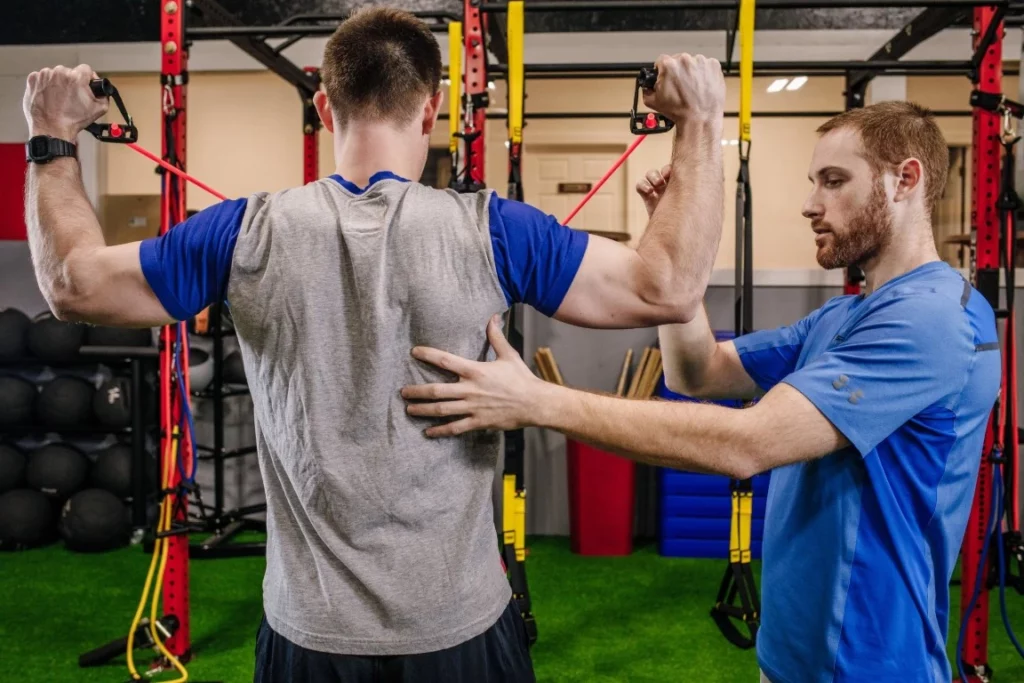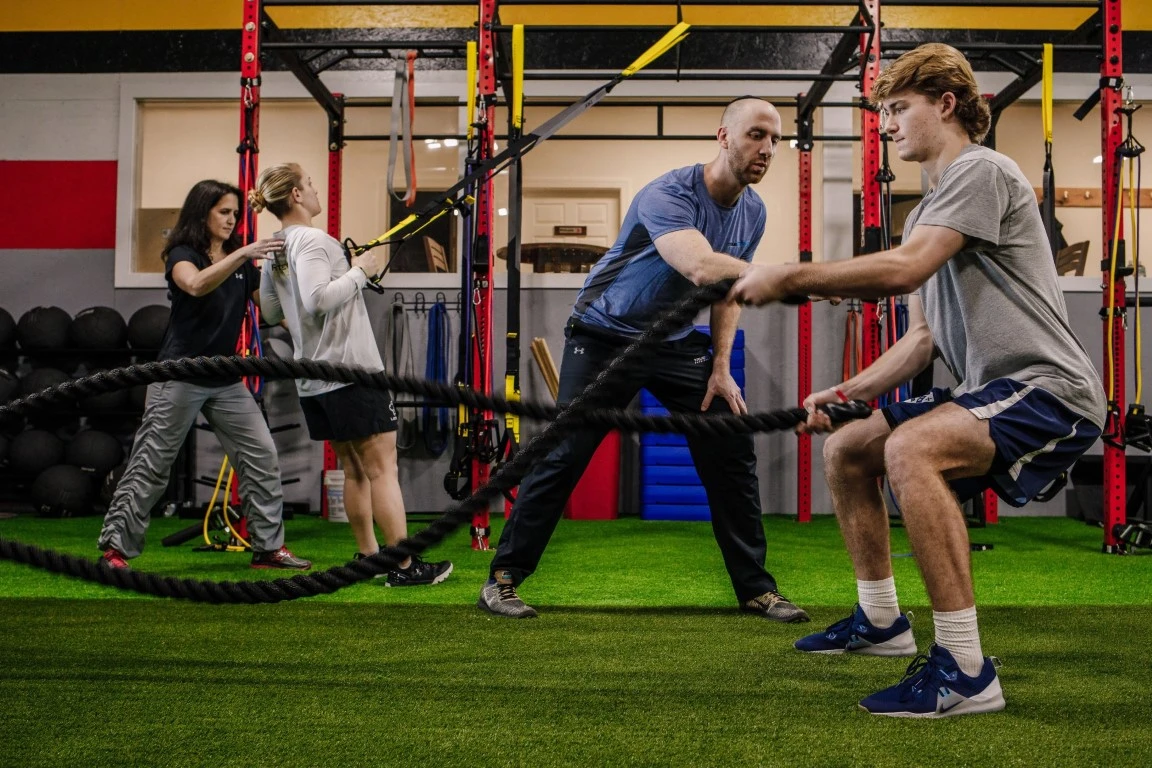In this comprehensive guide, we will provide you with everything you need to know about shoulder impingement exercises and how they can help alleviate your pain and improve your shoulder mobility.
Are you experiencing shoulder pain that is hindering your daily activities? It could be due to shoulder impingement, a common condition that occurs when the tendons in your shoulder become irritated or inflamed. But don’t worry, there is a solution – shoulder impingement exercises.
From understanding the causes and symptoms of shoulder impingement to learning the best exercises and stretches to strengthen and rehabilitate your shoulder, we’ve got you covered. Whether you’re an athlete looking to prevent shoulder injuries or simply someone seeking relief from chronic shoulder pain, this guide will equip you with the knowledge and tools to effectively manage shoulder impingement and get back to living your life pain-free.
So, let’s dive in and discover the world of shoulder impingement exercises together!
Causes and risk factors of shoulder impingement
Shoulder impingement is a condition that occurs when the tendons of the rotator cuff rub against the acromion, a bony bump on the top of the shoulder. This can cause pain, inflammation, and decreased range of motion.
There are a number of causes of shoulder impingement, including:
- Overuse: This is the most common cause of shoulder impingement. It can occur in people who participate in overhead sports, such as swimming, baseball, and tennis. It can also occur in people who have jobs that require repetitive overhead motions, such as painting or carpentry.
- Injury: A fall onto the shoulder or an outstretched arm can injure the rotator cuff tendons and lead to shoulder impingement.
- Age: Shoulder impingement is more common in people over the age of 50. This is because the acromion can become more prominent with age, which can narrow the space between the acromion and the rotator cuff tendons.
- Anatomical factors: Some people are more likely to develop shoulder impingement because of their anatomy. For example, people with a hooked acromion or a narrow subacromial space are more likely to develop this condition.
- Posture: Poor posture, such as hunching or slumping the shoulders, can put stress on the rotator cuff tendons and lead to shoulder impingement.
- Weak rotator cuff muscles: Weak rotator cuff muscles can make it more difficult to keep the humeral head centered in the glenoid socket, which can increase the risk of shoulder impingement.

Risk factors for shoulder impingement include:
- Age: Shoulder impingement is more common in people over the age of 50.
- Gender: Shoulder impingement is more common in women than in men.
- Occupation: People who have jobs that require repetitive overhead motions, such as painting or carpentry, are at increased risk of shoulder impingement.
- Sports: People who participate in overhead sports, such as swimming, baseball, and tennis, are at increased risk of shoulder impingement.
- Anatomical factors: Some people are more likely to develop shoulder impingement because of their anatomy. For example, people with a hooked acromion or a narrow subacromial space are more likely to develop this condition.
- Posture: Poor posture, such as hunching or slumping the shoulders, can put stress on the rotator cuff tendons and lead to shoulder impingement.
- Weak rotator cuff muscles: Weak rotator cuff muscles can make it more difficult to keep the humeral head centered in the glenoid socket, which can increase the risk of shoulder impingement.
If you are experiencing pain in your shoulder, it is important to see a doctor to get a diagnosis. Shoulder impingement can sometimes be mistaken for other conditions, such as rotator cuff tear or bursitis. Once you have been diagnosed with shoulder impingement, your doctor will discuss treatment options with you. Treatment for shoulder impingement typically includes rest, physical therapy, and medications. In some cases, surgery may be necessary.
Symptoms of shoulder impingement
The symptoms of shoulder impingement can vary from person to person, but they typically include:
- Pain in the top and outer side of the shoulder
- Pain that is worse when you lift your arm, especially when you lift it above your head
- Pain or aching at night, which can affect your sleep
- Weakness in your arm
- Stiffness in your shoulder
- Pain when reaching behind your back
If you experience any of these symptoms, it is important to see a doctor to get a diagnosis and treatment.
Here are some other symptoms that may be associated with shoulder impingement:
- A clicking or popping sensation in the shoulder
- Numbness or tingling in the arm
- Swelling in the shoulder
If you have any of these symptoms, it is important to see a doctor as soon as possible to get a diagnosis and treatment.
Importance of shoulder impingement exercises
There are a number of exercises that can help to improve shoulder impingement. These exercises typically focus on strengthening the rotator cuff muscles and improving the flexibility of the muscles and tendons in the shoulder.
The importance of shoulder impingement exercises is that they can help to:
- Reduce pain and inflammation
- Improve range of motion
- Strengthen the rotator cuff muscles
- Improve the function of the shoulder
- Prevent future shoulder injuries
If you are experiencing shoulder impingement, it is important to see a doctor or physical therapist to get a diagnosis and develop a treatment plan. Exercises should only be done under the supervision of a qualified healthcare professional.

Here are some of the most common shoulder impingement exercises:
- Wall slides: This exercise helps to improve the flexibility of the muscles and tendons in the shoulder. To do a wall slide, stand facing a wall with your arms at your sides. Slowly slide your arms up the wall until you reach your full range of motion. Hold for a few seconds, then slowly slide your arms back down.
- External rotation exercises: This exercise helps to strengthen the rotator cuff muscles. To do an external rotation exercise, hold a weight in each hand with your arms at your sides. Slowly rotate your arms outward until they are parallel to the ground. Hold for a few seconds, then slowly rotate your arms back to the starting position.
- Infraspinatus strengthening exercises: The infraspinatus is one of the rotator cuff muscles that is often weak in people with shoulder impingement. To strengthen the infraspinatus, you can do exercises such as the “full can” exercise or the “empty can” exercise.
These are just a few of the many shoulder impingement exercises that are available. Your doctor or physical therapist can help you develop a personalized exercise program that is right for you.
Here are some tips for doing shoulder impingement exercises safely:
- Start with gentle exercises and gradually increase the intensity as you get stronger.
- Avoid exercises that cause pain.
- Warm up before you start exercising and cool down afterwards.
- Use proper form to avoid injury.
If you have any questions or concerns about shoulder impingement exercises, be sure to talk to your doctor or physical therapist.
Types of shoulder impingement exercises
Shoulder impingement exercises can be divided into three main categories: strengthening exercises, stretching exercises, and rehabilitation exercises. Each type of exercise targets different aspects of shoulder impingement and plays a unique role in the overall rehabilitation process.
1. Strengthening exercises for shoulder impingement
Strengthening exercises aim to target the muscles around the shoulder joint to improve stability and support. These exercises often involve the use of resistance bands, dumbbells, or bodyweight to challenge the muscles and promote strength gains. Examples of strengthening exercises for shoulder impingement include shoulder presses, rows, lateral raises, and scapular stabilization exercises.
2. Stretching exercises for shoulder impingement
Stretching exercises focus on improving the flexibility of the muscles and tendons around the shoulder joint. These exercises help increase the range of motion, reduce muscle tension, and improve overall shoulder mobility. Common stretching exercises for shoulder impingement include shoulder stretches, chest stretches, and upper back stretches.
3. Rehabilitation exercises for shoulder impingement
Rehabilitation exercises are specifically designed to address the underlying causes of shoulder impingement and promote proper movement patterns. These exercises often involve a combination of strengthening, stretching, and mobility exercises to restore optimal function and prevent future impingement. A healthcare professional or physical therapist can guide you through a tailored rehabilitation program based on your specific needs and goals.

Alternative treatments for shoulder impingement
In addition to shoulder impingement exercises, there are other alternative treatments that may be used to manage shoulder impingement and alleviate pain. These treatments can be used in conjunction with exercises or as standalone therapies, depending on the severity of your condition. Some alternative treatments for shoulder impingement include:
– Manual therapy: This involves hands-on techniques, such as massage, joint mobilization, and soft tissue manipulation, to improve joint mobility, reduce pain, and promote healing.
– Acupuncture: This ancient Chinese practice involves the insertion of thin needles into specific points on the body to stimulate the flow of energy and alleviate pain. Acupuncture has been found to be effective in reducing pain and improving function in individuals with shoulder impingement.
– Non-steroidal anti-inflammatory drugs (NSAIDs): NSAIDs, such as ibuprofen or naproxen, can help reduce pain and inflammation associated with shoulder impingement. They are typically used as a short-term solution to manage acute pain.
– Corticosteroid injections: In some cases, corticosteroid injections may be recommended to reduce inflammation and provide temporary pain relief. These injections are administered directly into the shoulder joint by a healthcare professional.
– Physical therapy: Working with a physical therapist can be highly beneficial for individuals with shoulder impingement. They can provide guidance, hands-on treatment, and personalized exercise programs to address your specific needs and help you recover faster.
It’s important to consult with a healthcare professional to determine the most appropriate treatment approach for your shoulder impingement.
Prevention and long-term management of shoulder impingement
Preventing shoulder impingement and managing it in the long term requires a comprehensive approach that includes proper exercise, posture correction, and lifestyle modifications. Here are some tips to prevent shoulder impingement and promote long-term shoulder health:
– Maintain good posture: Practice good posture throughout the day, especially when sitting or standing for long periods. Keep your shoulders relaxed, spine aligned, and avoid slouching or hunching forward.
– Avoid repetitive overhead movements: Minimize activities that involve repetitive overhead movements, such as lifting heavy objects or reaching for objects on high shelves. If these movements are unavoidable, take frequent breaks, and ensure proper form and technique.
– Strengthen the shoulder muscles: Regularly incorporate shoulder-strengthening exercises into your fitness routine to improve stability and support around the shoulder joint. Focus on exercises that target the rotator cuff muscles, deltoids, and scapular stabilizers.
– Stretch regularly: Maintain good shoulder flexibility by incorporating regular stretching exercises into your routine. This helps improve range of motion, reduce muscle tension, and prevent tightness in the shoulder muscles.
– Take breaks and listen to your body: Avoid overloading your shoulder joint by taking regular breaks during activities that require repetitive shoulder movements. Listen to your body and rest when you feel fatigued or experience pain or discomfort.
– Maintain a healthy lifestyle: Adopting a healthy lifestyle that includes regular exercise, a balanced diet, and adequate sleep can contribute to overall shoulder health. A healthy lifestyle promotes proper muscle function, reduces inflammation, and supports the healing process.
Let’s Sum Up
Shoulder impingement exercises are a valuable tool in the management and rehabilitation of shoulder impingement. By targeting the underlying causes, strengthening the shoulder muscles, improving flexibility, and promoting proper movement patterns, these exercises can help alleviate pain, improve shoulder mobility, and prevent further damage. However, it’s important to approach shoulder impingement exercises with caution and under the guidance of a qualified professional. Additionally, alternative treatments and lifestyle modifications can also play a role in managing shoulder impingement in the long term. By adopting a holistic approach, you can effectively manage shoulder impingement and get back to living your life pain-free.
So, start incorporating shoulder impingement exercises into your routine and take the first step towards a healthier, pain-free shoulder!
You May Also Like
- The Ultimate Guide to Teen Bodybuilding
- Age is Just a Number: Senior Bodybuilding Tips and Tricks
- 8 Best Bodybuilding Routines to Help You Achieve Your Fitness Goals
- Maximizing Muscle Gains: The Ultimate Guide to Bodybuilding for Men






